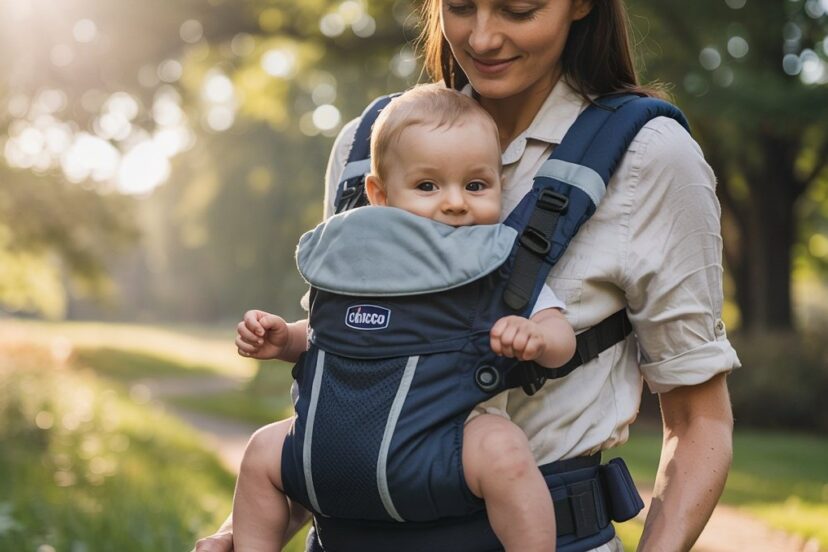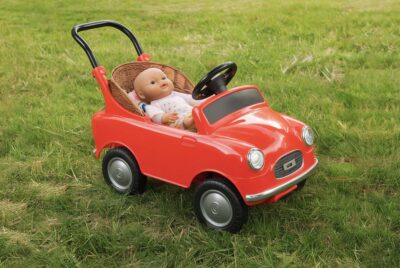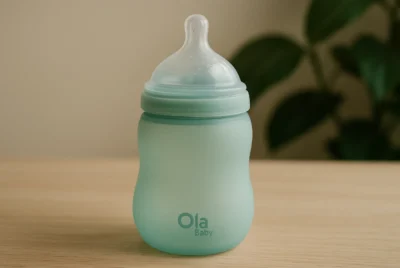Chicco Baby Carrier: Comfort, Convenience, and Care
*We may earn a commission for purchases made using our links. Please see our disclosure to learn more.
When my first child was born three years ago, I found myself completely overwhelmed by the sheer number of baby products on the market. As I tried to navigate through the endless options, one item became absolutely essential to my daily life: a reliable baby carrier. After experimenting with several brands and styles, I discovered that Chicco baby carrier offered the perfect combination of comfort, safety, and value that made my parenting journey significantly easier.
“The right baby carrier can transform your parenting experience, providing not just convenience but also fostering that crucial bond between parent and child. Chicco stands out for creating carriers that prioritize both the developmental needs of babies and the practical needs of parents.” — Dr. Sarah Johnson, Pediatric Physical Therapist and Child Development Specialist
Key Takeaways
- Versatility: Chicco baby carrier adapt to your growing baby, with options suitable from newborn stage through toddlerhood (typically 7-33 pounds depending on the model).
- Ergonomic Design: Their carriers focus on proper hip positioning for babies and comfortable weight distribution for parents.
- Easy to Use: Most Chicco carriers feature intuitive designs that don’t require complex wrapping or buckling techniques.
- Affordability: Compared to premium carrier brands, Chicco offers excellent value while maintaining quality and safety standards.
- Italian Heritage: Drawing on over 60 years of experience, Chicco’s Italian design approach balances functionality with style.
Top Chicco Baby Carrier
Based on my experience and extensive research, here are four standout Chicco baby carrier currently available:
1. Chicco SmartSupport Aluminum Frame Backpack Carrier
The Chicco SmartSupport Aluminum Frame Backpack Carrier is a lightweight and ergonomic solution for parents who love outdoor adventures. Designed with comfort and convenience in mind, this baby backpack carrier features an adjustable seat that grows with your child, a breathable mesh back panel, and a sturdy aluminum frame for easy carrying. Whether you're hiking, sightseeing, or simply on the go, this carrier ensures both you and your little one enjoy the journey.
- Lightweight Design: Durable aluminum frame makes it easy to carry for extended periods.
- Adjustable Fit: Padded shoulder and waist straps provide customizable comfort for parents.
- Sun Protection: Adjustable UPF 50+ canopy shields your child from the sun.
- Limited Storage: Only two small pockets for essentials.
- Bulky for Travel: May be challenging to pack in tight spaces.
- Not for Infants: Designed for toddlers, not newborns.
The Chicco SmartSupport Aluminum Frame Backpack Carrier is designed for parents who love exploring the outdoors with their little one. What makes this carrier stand out is its lightweight yet sturdy aluminum frame, offering excellent back support without adding unnecessary bulk. The padded waist belt helps distribute weight evenly to reduce strain on the shoulders, making long hikes or extended outings more comfortable.
This carrier includes thoughtful features such as an adjustable UPF 50+ sun canopy, a built-in kickstand for easy loading, and breathable mesh padding to keep both parent and child cool. The height-adjustable seat accommodates children from around 6 months (when they can sit unassisted) up to 33 pounds, ensuring a secure and comfortable fit as they grow.
On a recent trip to the mountains, the SmartSupport proved to be an invaluable companion. My toddler stayed secure and content for hours, while the ergonomic design prevented strain on my back. The built-in storage pockets were handy for snacks and small essentials, and the adjustable footrests kept my child’s legs supported, preventing discomfort during long stretches on the trail.
2. Chicco SnugSupport 4-in-1 Infant Carrier
The Chicco SnugSupport 4-in-1 Infant Carrier is designed to provide a comfortable, supportive, and versatile carrying experience for both parent and baby. With four carrying positions—parent-facing, outward-facing, and back carry—this carrier grows with your child from 7.5 to 33 lbs. The padded head support, adjustable leg panels, and ergonomic “M” position seat ensure your baby’s comfort and healthy hip development.
- Versatile Positions: Four carrying options adapt as your baby grows.
- Ergonomic Support: “M” position seat promotes healthy hip development.
- Parent Comfort: Wide straps and lumbar support reduce strain.
- Limited Storage: No built-in pockets for small essentials.
- Bulkier Design: Can feel a bit structured compared to soft wraps.
- Learning Curve: Adjusting between carry positions takes practice.
The Chicco SnugSupport 4-in-1 Infant Carrier has quickly become my go-to for everything from quick errands to long walks. Designed for babies from 7.5 to 33 lbs., it offers four carrying positions, allowing for a seamless transition as your child grows. The structured ergonomic seat and adjustable leg panels ensure a snug and comfortable fit, while the padded head support provides extra security for newborns.
What sets this carrier apart is its thoughtful design for both baby and parent. The wide shoulder straps and lumbar support evenly distribute weight, reducing strain on your back and shoulders. Adjusting the fit is simple, making it easy to switch between caregivers.
I vividly remember using the SnugSupport during a long afternoon at the park with my little one. She loved facing outward, watching the world around her, while I appreciated the breathable fabric that kept us both cool in the sun. The snug fit and even weight distribution made it comfortable to wear for hours without back pain, and I loved how secure she felt in every position.
3. Chicco EasyFit Kangaroo Baby Carrier
The Chicco EasyFit Kangaroo Baby Carrier is designed for effortless babywearing, offering a simple, t-shirt-like fit that makes it easy to put on and adjust. Perfect for parents on the go, this lightweight and ergonomic carrier provides a snug, secure fit for both newborns and growing babies. The adjustable straps ensure proper support, while the soft, breathable fabric keeps both parent and baby comfortable.
- Easy to Wear: Slips on like a t-shirt for quick, hassle-free babywearing.
- Adjustable Fit: Customizable straps provide support for both parent and baby.
- Lightweight Design: Comfortable for extended wear without added bulk.
- Limited Carry Positions: Less versatility compared to multi-position carriers.
- Minimal Padding: May not offer as much shoulder or lumbar support.
- No Storage Pockets: Lacks compartments for essentials like keys or pacifiers.
For new parents looking for a hassle-free baby carrier, the Chicco EasyFit Kangaroo delivers on its promise. Unlike traditional carriers that require multiple straps and adjustments, this one slips on like a t-shirt, allowing you to put it on before placing your baby inside. I found this especially helpful during the newborn stage when I was still gaining confidence in babywearing.
The EasyFit supports babies from 7.5 to 26 lbs. and offers two carrying positions—parent-facing for newborns and outward-facing as they grow. The soft, breathable fabric provides just the right amount of stretch and support, while the minimalist design eliminates unnecessary bulk. Plus, it folds down compactly, making it perfect for travel and quick outings.
I remember using the EasyFit during a hectic airport trip. The simple design allowed me to quickly adjust my baby’s position without struggling with extra buckles. The lightweight fabric kept us both cool in crowded spaces, and when inevitable messes happened, I had peace of mind knowing the entire carrier was machine washable.
4. Chicco Sidekick Plus 3-in-1 Hip Seat Carrier
The Chicco Sidekick Plus 3-in-1 Hip Seat Carrier is designed for ultimate flexibility and comfort, making it an excellent choice for growing families. This hip-healthy carrier (acknowledged by the International Hip Dysplasia Institute) combines the benefits of a structured carrier with the support of a hip seat, offering multiple carrying positions to accommodate babies from infancy through toddlerhood.
- 3-in-1 Functionality: Use as a full carrier, hip seat, or separate seat for two caregivers.
- Ergonomic & Hip-Healthy: Supports baby’s natural sitting position while reducing back strain.
- Ventilation & Sun Protection: Zip-off mesh panel and detachable privacy hood for comfort.
- Bulky for Travel: Not as compact as some lightweight carriers.
- Hand Wash Only: Requires more effort for cleaning.
- Limited Newborn Support: Works best for babies with good head control.
The Chicco Sidekick Plus redefines convenience for parents by combining the benefits of a structured hip seat with a soft carrier, offering three versatile carrying positions. Whether you need a quick hip seat for brief pick-ups, a front carrier for close bonding, or a back carrier for longer walks, this hybrid design ensures both comfort and support for you and your baby.
One of the standout features is its detachable hip seat, which provides a stable, ergonomic surface for quick carries, reducing arm fatigue. For extended outings, the full carrier evenly distributes weight across your back and shoulders, minimizing strain, especially important for parents with back concerns. The breathable mesh panel helps keep your baby cool, while the adjustable fit makes it easy to share between caregivers of different sizes.
I found this carrier especially useful during family outings. At the zoo, I could use the hip seat for quick pick-ups when my toddler wanted a better view, then transition to the full carrier when he got tired. The wide waistband and lumbar support made all the difference, allowing me to carry him comfortably for hours.
Understanding Chicco’s Approach to Baby Carriers
Chicco’s philosophy centers around what they call “parental intuition” – the idea that baby products should work the way parents naturally expect them to work. This approach is evident in their carrier designs, which prioritize straightforward use without sacrificing safety or comfort.
Safety First
All Chicco carriers are designed to maintain the “M” position for baby’s legs – knees higher than bottom, thighs supported – which pediatric hip specialists recommend for proper hip development. Their carriers have undergone rigorous testing to meet or exceed safety standards in multiple countries.
In my experience, the secure fasteners and reinforced stitching on Chicco carriers provide peace of mind. The carriers include features like padded head supports that can be folded down as baby gains neck strength and adjustable leg openings to ensure proper positioning as your child grows.
The International Hip Dysplasia Institute has recognized some Chicco carrier models as “hip-healthy,” which was a significant factor in my decision to choose the brand. As someone with a family history of hip issues, I was particularly concerned about providing proper support during my baby’s developmental months.
Parent Comfort Considerations
Carrying a baby for extended periods can strain your back, shoulders, and posture. Chicco addresses this concern through thoughtful weight distribution systems in their carriers. I’ve noticed that even their simpler models include wide, padded shoulder straps and supportive waist belts that transfer weight to the stronger muscles in your hips and core.
The adjustability of Chicco carriers accommodates different body types – something I appreciated when sharing a carrier with my partner, who has a much larger frame than I do. The ability to fine-tune the fit means better comfort for longer wearing sessions.
After developing minor back pain with a different carrier brand, switching to a Chicco model with proper lumbar support made a noticeable difference in my comfort level during all-day babywearing sessions. The crossable shoulder straps on several models allowed me to distribute weight more evenly across my upper body, preventing the shoulder tension I had experienced with straight-strap designs.
Materials and Durability
Chicco uses machine-washable fabrics that stand up to frequent cleaning – an absolute necessity given the inevitable spit-up, drool, and other messes that come with babies. I’ve put my Chicco carrier through dozens of wash cycles, and it maintains its shape and support without significant wear.
The breathable mesh panels incorporated into many models help regulate temperature, preventing both baby and parent from overheating. This feature proved invaluable during summer months when baby-wearing could otherwise become uncomfortably warm.
After two years of near-daily use with my first child and now continuing with my second, my primary Chicco carrier shows minimal signs of wear. The zippers still function smoothly, the buckles snap securely, and the structural integrity of the carrier remains intact. The fabric has faded slightly from frequent washing but hasn’t thinned or developed weak spots at stress points.
How Chicco Compares to Other Carrier Brands
When I was researching carriers, I found myself comparing Chicco to premium brands like Ergobaby and BabyBjörn, as well as budget options available at major retailers. Chicco occupies a sweet spot in the middle – offering many features of high-end carriers at a more accessible price point.
Unlike some budget carriers that sacrifice ergonomics for simplicity, Chicco maintains proper positioning that supports healthy hip development. And unlike some premium carriers that come with a steep learning curve, most Chicco models can be mastered in minutes rather than days.
What Chicco might lack in the customization options of wraps or the premium materials of top-tier brands, they make up for in user-friendliness and reliability. For most parents, especially first-timers, these practical considerations often outweigh the benefits of more complex carrier systems.
I initially purchased an expensive woven wrap carrier that promised maximum comfort and flexibility. After weeks of struggling with the lengthy fabric and complex tying techniques, I switched to a Chicco EasyFit and was immediately relieved by how quickly I could get my baby secured. The premiumdesign elements of my expensive wrap didn’t matter when I couldn’t confidently use it in real-world situations.
Matching Carrier Type to Your Lifestyle
The right Chicco carrier for you depends largely on how you plan to use it:
For urban parents who need something for public transportation and navigating busy sidewalks, the UltraSoft Magic or EasyFit provide compact, lightweight options that don’t take up much space when folded. I found these models particularly useful when dealing with subway stairs and crowded buses during city outings.
For outdoor enthusiasts planning hikes or long walks, the SmartSupport Backpack offers the support and storage needed for longer adventures. The integrated sunshade protected my daughter’s sensitive skin during our mountain hikes, and the storage compartments meant I could keep essentials like water, snacks, and diaper supplies accessible without carrying additional bags.
For parents of multiple children who need to quickly switch between carrying and hands-free moments, the Sidekick Plus hip seat provides flexibility for those in-between times. When my toddler wanted to walk independently but my infant needed carrying, this hybrid design allowed me to quickly accommodate both children’s needs without complex adjustments.
For parents sharing a carrier between different body types, the highly adjustable models like the SmartSupport ensure a comfortable fit for various users. My husband and I could switch the carrier between us with minimal readjustment, making family outings more efficient and comfortable for everyone.
Caring for Your Chicco Carrier
To maximize the lifespan of your carrier, follow these simple maintenance steps:
- Regular cleaning: Most Chicco carriers are machine washable (gentle cycle, cold water), but always check the specific care instructions for your model. I found that pre-treating drool spots and food stains with a gentle detergent before washing helped maintain the carrier’s appearance.
- Proper storage: Store your carrier hanging or loosely folded to prevent permanent creases that could weaken the fabric over time. I installed a simple hook in our entryway closet specifically for the carrier, which made it both accessible and properly stored.
- Inspect regularly: Check buckles, seams, and straps for any signs of wear before each use, especially once your carrier has been in use for several months. Pay particular attention to stress points where your child’s weight creates the most pressure.
- Sun protection: Avoid prolonged exposure to direct sunlight when not in use, as UV rays can degrade fabric strength over time. After accidentally leaving our carrier in the car during a hot summer day, I noticed slight fading and made a point to keep it stored indoors afterward.
- Drying technique: Air dry your carrier rather than using a dryer to preserve elastic components and prevent shrinkage. I found hanging the carrier over a shower rod allowed for efficient drying while maintaining its shape.
- Buckle care: Occasionally clear debris from buckle mechanisms with a soft brush to prevent stiffness or malfunction. After a beach trip, sand had worked its way into one of our carrier’s buckles, making it difficult to release until properly cleaned.
Making the Most of Your Chicco Carrier
Through my parenting journey, I’ve discovered a few tips that help maximize the benefits of babywearing with a Chicco carrier:
- Practice without baby first: Before your first outing, try putting the carrier on and taking it off several times without your baby to build confidence. I practiced in front of a mirror to ensure I understood every strap and adjustment point.
- Start with short sessions: Begin with 15-20 minute carrying sessions and gradually increase time as both you and baby become accustomed to the carrier. This approach helped my baby adjust to the new sensations without becoming overwhelmed.
- Layer appropriately: Remember that your body heat will keep baby warm, so dress them in one layer less than you might otherwise to prevent overheating. During winter months, I found that a thin fleece layer for my baby worked better than bulky outerwear when using the carrier.
- Position check: Periodically ensure that baby is seated properly with knees higher than bottom and face visible with good airflow. I developed a habit of doing a quick “ABC” check (Airway, Body position, Comfort) every time I put my baby in the carrier.
- Feeding on the go: Many Chicco carriers can be adjusted slightly to facilitate breastfeeding while maintaining privacy and support. The UltraSoft Magic worked particularly well for discreet nursing sessions during family outings when finding a private spot wasn’t feasible.
- Use the carrier for bonding: Incorporate babywearing into special bonding routines like nature walks or quiet reading time. My daughter and I established a special “carrier cuddle” time each evening when my husband took over dinner preparations, giving us focused connection time at the end of busy days.
Conclusion
Chicco baby carriers represent a thoughtful balance of safety, comfort, and practicality that makes them an excellent choice for most families. Their attention to ergonomic design benefits both baby’s development and parent’s physical comfort, while their straightforward approach simplifies the babywearing experience.
What I’ve come to appreciate most about Chicco carriers through my parenting journey is their reliability – they simply work as expected, day after day. In the midst of the unpredictability that is parenting a young child, having gear you can count on makes all the difference.
Whether you’re a first-time parent intimidated by the complexity of some carrier systems or an experienced caregiver looking for practical functionality without unnecessary frills, Chicco offers options worth considering. Their carriers grow with your child, adapt to your lifestyle, and provide the close contact that nurtures the parent-child bond during those precious early years.
After three years and two children, my Chicco carriers remain among the most valuable baby investments I’ve made. They’ve enabled me to maintain an active lifestyle while keeping my children close, secure, and content – an invaluable combination during the demanding early years of parenthood.
Frequently Asked Questions
At what age can I start using a Chicco baby carrier?
Most Chicco carriers are designed for use from approximately 7-8 pounds (typically around birth for full-term babies) through toddlerhood. However, specific models have different minimum requirements. The EasyFit and UltraSoft Magic can be used from birth with proper newborn positioning, while the SmartSupport Backpack requires babies to have independent head and neck control (usually around 6 months). Always check the specific guidelines for your model.
Are Chicco carriers good for babies with hip dysplasia concerns?
While Chicco carriers are designed to promote healthy hip positioning with the recommended “M” position (knees higher than bottom, thighs supported), parents of babies diagnosed with hip dysplasia should consult their pediatrician before using any carrier. Some Chicco models may be suitable with medical approval, but specific therapeutic carriers might be recommended instead for babies with diagnosed hip issues.
How long can I comfortably wear my baby in a Chicco carrier?
This varies by carrier model and your personal comfort level. For structured carriers like the SmartSupport, many parents comfortably wear their babies for 1-2 hours at a stretch. Lighter carriers like the EasyFit might be comfortable for 30-60 minutes before you need a break. Listen to your body and your baby’s cues – fussiness, repositioning attempts, or discomfort in your shoulders or back indicate it’s time for a break. With practice and as your muscles strengthen, wearing time often increases.
Can I wash my Chicco carrier in the washing machine?
Yes, most Chicco carriers are machine washable. Use cold water on a gentle cycle and mild detergent. Remove any detachable structural elements (like support panels or frames) before washing. Air drying is recommended to preserve elasticity and prevent shrinkage. Always check your specific model’s care instructions for any variations.
How do I know if my baby is positioned correctly in the Chicco carrier?
A properly positioned baby should have: their face visible and close enough to kiss; a clear airway with chin off chest; knees higher than bottom forming an “M” shape; back supported in a natural curve (not slumping); and the carrier should feel snug enough that baby doesn’t sag but not so tight that it restricts movement or creates pressure points. If using a front-facing position (in carriers that allow it), only do so once baby has strong head/neck control and follow the height/weight guidelines specific to your Chicco model.














